9. To Live and Die in L.A. (William Friedkin, 1985)
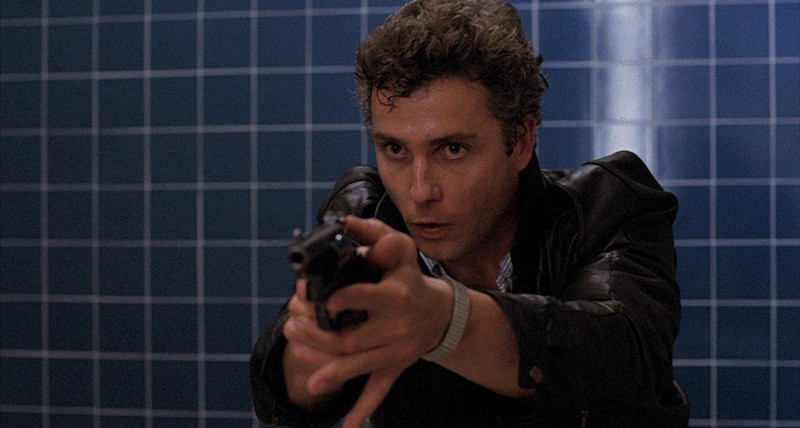
Friedkin’s incredibly stylish action thriller, To Live and Die in L.A., presents another side to Los Angeles’ crime scene. This story sets a reckless secret agent and his partner against a skillful counterfeiter, exposing a certain beauty within the harshness of the city.
Rick Masters (Willem Dafoe) is an artist and counterfeiter, wanted by the U.S. government. Richard Chance (William L. Petersen), a daring Secret Service agent, and his elder partner, Jimmy Hart, is assigned the task to catch Masters. After Masters kills Chance’s partner when Hart gets too close to the artist’s desert warehouse, Chance vows to get Masters at any cost.
We are constantly made aware of the Los Angeles setting through Robby Müller’s impeccable cinematography: the aerial footage of the skyscrapers downtown, the palm trees seemingly set ablaze by the crimson sun, and the smog-filled, congested streets are among many establishing shots in the film. Not to mention the fact that L.A. is built into the title of the film.
Why Los Angeles? For Friedkin’s film that depicts characters living on the edge, L.A.’s rough wasteland acts as the perfect playground (Don’t miss the famous car chase scene where Chance drives on the wrong side of the freeway!).
10. Who Framed Roger Rabbit? (Robert Zemeckis, Richard Williams 1988)
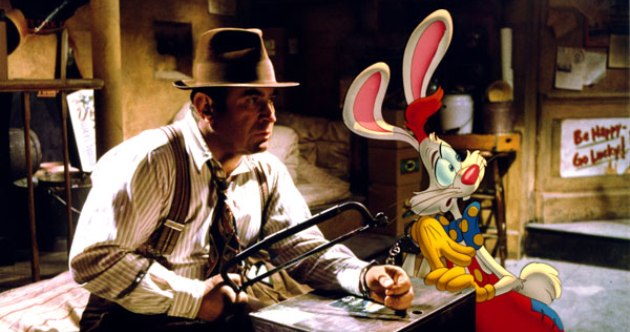
This popular fantasy/comedy film makes use of the Los Angeles setting in its imaginative depiction of the life and work of cartoon actors in Hollywood. Not only does the film present Hollywood’s cartoon legacy, but it also touches upon elements of Los Angeles County’s true history.
It is late 1940s Hollywood, and private detective Eddie Valiant (Bob Hoskins) is hired by toon star Roger Rabbit to spy on wife Jessica Rabbit, whom Roger suspects is cheating on him. Eddie soon becomes involved in an elaborate murder case, with all signs pointed to Roger as the prime suspect. Eddie helps Roger as the two of them investigate the murder and follow the tracks of an evil supervillain, Judge Doom (Christopher Lloyd), and his plans to eliminate Toontown and all of its inhabitants.
Not only does this fun film portray classic Hollywood and its appropriate cartoon characters from that era, but it refers to true Los Angeles history. In Judge Doom’s nefarious plan to destroy all the toons, there also lies the intent to replace Toontown with a newfangled freeway, forcing trolleys to shut down.
This plan of action alludes to the Great American streetcar scandal that struck Los Angeles in the 1930s. Although this scandal remains a debated subject, many sources claim that companies such as General Motors deliberately planned for the demolition of trolleys and street cars in an effort to create freeways, thus increasing the demand and sales of cars and tires.
This displacement of public transportation, which once efficiently connected the various cities of Los Angeles County, laid the groundwork for L.A.’s continuing car culture.
In a large, sprawling county such as L.A., transportation is extremely important. The creation of the freeways in Los Angeles made a gigantic impact on the area’s culture and lifestyle. As any Angelino will tell you, you can’t get anywhere in L.A. without a car.
11. Boyz N the Hood (John Singleton, 1991)
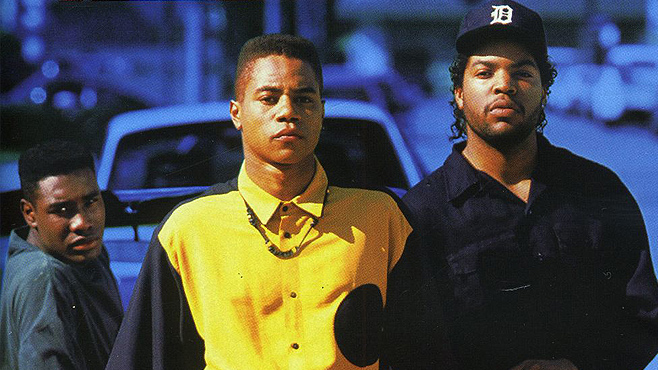
John Singleton’s outstanding debut film depicts life for an Afro-American community in South Central Los Angeles amidst gang violence, drug use, and poverty. The film remains extremely relevant today as it deals with the issues that continue to face black communities in big cities- Los Angeles being the prime example.
Following the lives of three young black men growing up in South Central, Singleton’s film dramatically, yet also realistically, illustrates the struggles of living within a neighborhood full of violent crime.
Trey (Cuba Gooding Jr.) comes of age in South Central, where he lives with his single father, Furious (Laurence Fishburne). His group of childhood friends surround him like family; The two major influences on Trey’s life are Doughboy (Ice Cube), a gang member recently released from prison, and his half-brother Ricky (Morris Chestnut), star of the high school football team eager for a scholarship to USC.
After a run-in with Doughboy’s rival gang, the violence of the streets inescapably surrounds these young men, whose ultimate goal is to get out of L.A.
The film does a great job portraying life on the violent streets of South Central L.A., and the struggles that black people in that community must endure. The atmosphere of the film is representative of Los Angeles. The constant sound of sirens and helicopters loom over each scene, reminding the audience of the ever present crime and violence surrounding the characters.
Laurence Fishburne’s character explains the disparity between the ‘hood and other, less violent areas of Los Angeles: “Why is it that there is a gun shop on almost every corner in this community?… For the same reason that there is a liquor store on almost every corner in the black community. Why? They want us to kill ourselves.”
While discussing race, the film also touches upon the pertinent issue of gentrification within these communities, and the importance of keeping the businesses and neighborhoods black. Although the film was released almost 25 years ago, it remains so utterly relevant to the modern world.
As a side note, the Los Angeles Times’ L.A. County neighborhood map lists the areas around and between Inglewood and South Central as the most violent areas of Los Angeles today, suggesting that the gang violence that once existed within those areas are now being pushed out to neighboring communities due to gentrification.
Inglewood is awaiting the arrival of a new NFL stadium (set to open in 2018), which is bound to increase property values and thus increase gentrification.
12. The Player (Robert Altman, 1992)
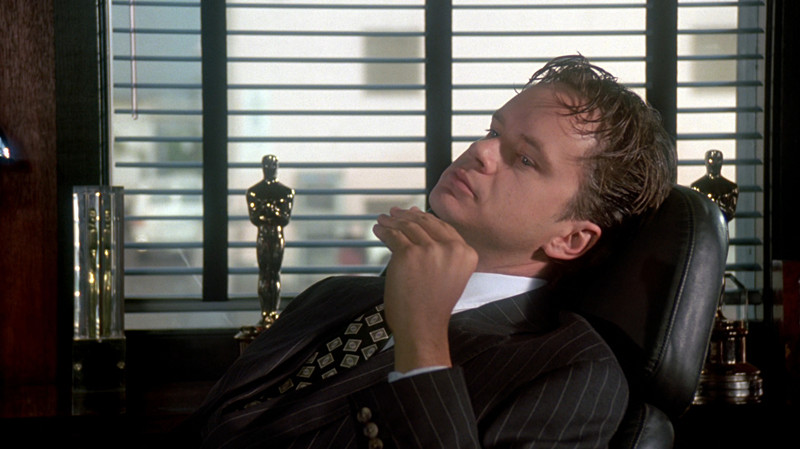
With a slew of inside jokes, celebrity cameos, as well as a darkly comic satire of the industry, Robert Altman’s film places the viewer within the Hollywood bubble. This murder crime story pokes fun at Hollywood, while also providing insight into the cold greediness that exists within the business.
Griffin Mill (Tim Robbins) is a Hollywood studio executive who hears pitches and green-lights film projects. He callously rejects many scripts. Mill suddenly begins to receive death threats, presumably from an unknown screenwriter whose script he denied. With his job in danger by the presence of an ambitious young exec Larry Levy (Peter Gallagher), Mill grows nervous. He seeks out one of the many screenwriters whose pitch he rejected in an attempt to confront one of his demons.
Mill meets the young writer at a Pasadena theater and inadvertently kills him. Now with police detectives Avery (Whoopi Goldberg) and DeLongpre (Lyle Lovett) on his back, Mill must stealthily keep his head above water as he romances the dead writer’s girlfriend, June Gudmundsdottir (Greta Scacchi).
Altman described the film as a “mild satire,” however the depiction of Hollywood as an apathetic place where greedy sociopaths are rewarded is not so mild. Roger Ebert suggested that after Altman’s string of flops in the 1980s, Altman was able to exact revenge on Hollywood through this film’s angry, satirical edge.
13. Falling Down (Joel Schumacher, 1993)
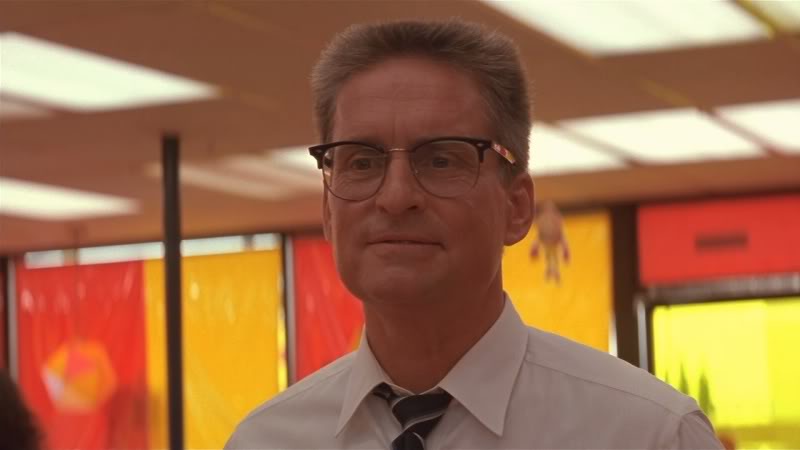
In Schumacher’s dark action comedy/drama, Los Angeles is illustrated as a claustrophobic, smog-filled hell-hole. The city’s chaos is magnified by a character known as D-FENS (Michael Douglas), who just wants to escape the madness and be with his daughter and ex-wife.
The film begins with D-FENS, in a white-collar short sleeve shirt and tie (reminiscent of the satirical comic character Dilbert), sitting in bumper to bumper freeway traffic on a sweltering L.A. morning. His sweaty, frustrated face reveals his exhaustion. He has reached his breaking point- he leaves his car on the freeway and walks off into the streets of Los Angeles, determined to get home.
Faced with challenges along the way, he snaps, and flies into a murderous rampage as he travels across the city to Venice, where his ex-wife is preparing a birthday party for their daughter. Sergeant Prendergast (Robert Duvall), on his last day as a cop, becomes fascinated by the erupting violence perpetrated by this clean cut, white-collar worker.
Although hounded by his high maintenance wife (Tuesday Weld) to come home early and finally be done as a cop, Prendergast works to catch D-FENS before he gets to Venice.
The quirkiness of Los Angeles’ street life is alive and well in this film, however hated by D-FENS. He is caught in traffic, overcharged at a market, threatened by thugs, is denied breakfast at a fast-food restaurant… all these things converge to set off D-FENS.
The terrorized quickly becomes the terrorizer. He vehemently sticks to his conventional American values throughout the film, defending his rights as a consumer, his freedom of speech, and evidently, his right to carry a weapon. He sees all the things wrong with society, claiming that it is not he who is sick, but Los Angeles.
The film pokes fun at the little ways in which Los Angeles can drive a person mad: the constant construction, the freeway traffic, the unusual, arrogant characters that animate the streets downtown- all of which come together to prompt D-FENS into violent action on one hot L.A. day.
14. Short Cuts (Robert Altman, 1993)
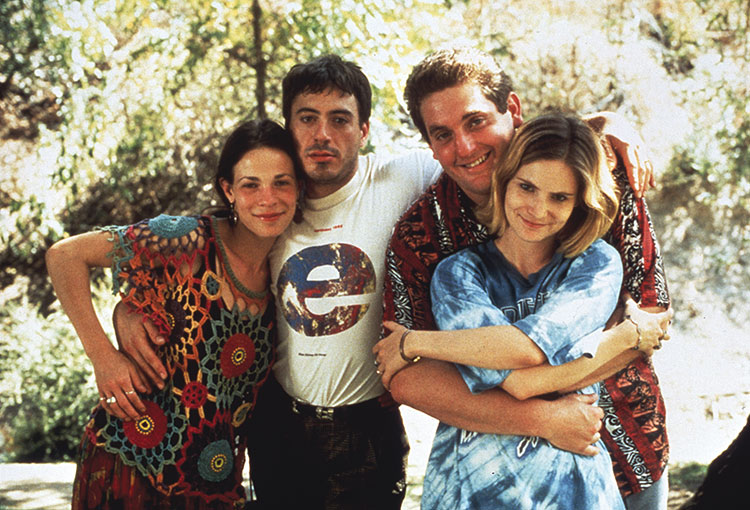
This terrific ensemble drama captures the intersecting lives and adventures of 20+ people in Los Angeles. Because the film is made up of multiple short stories and narrative threads, the locale of Los Angeles acts as a unifying force for the characters and their stories.
Inspired by the short stories of Raymond Carver, Altman’s film expertly shifts from one story to another, with Los Angeles as the main stabilizing element. With an all-star cast that includes Julianne Moore, Matthew Modine, Peter Gallagher, Andie MacDowell, Chris Penn, Robert Downey, Jr., Jack Lemmon, Lily Tomlin, and Tom Waits (among many others), the film features separate and converging stories, involving thematic elements of love, sex, infidelity, and death.
Los Angeles’ enormous geographic layout makes for the perfect backdrop of this enormous cast of characters and their various episodes. The characters all come from differing socio-economic backgrounds, showing the economic diversity that exists within L.A. Although the characters live in different parts of the city, they all come to terms with similar issues that seems to erupt all at once.
15. Pulp Fiction (Quentin Tarantino, 1994)
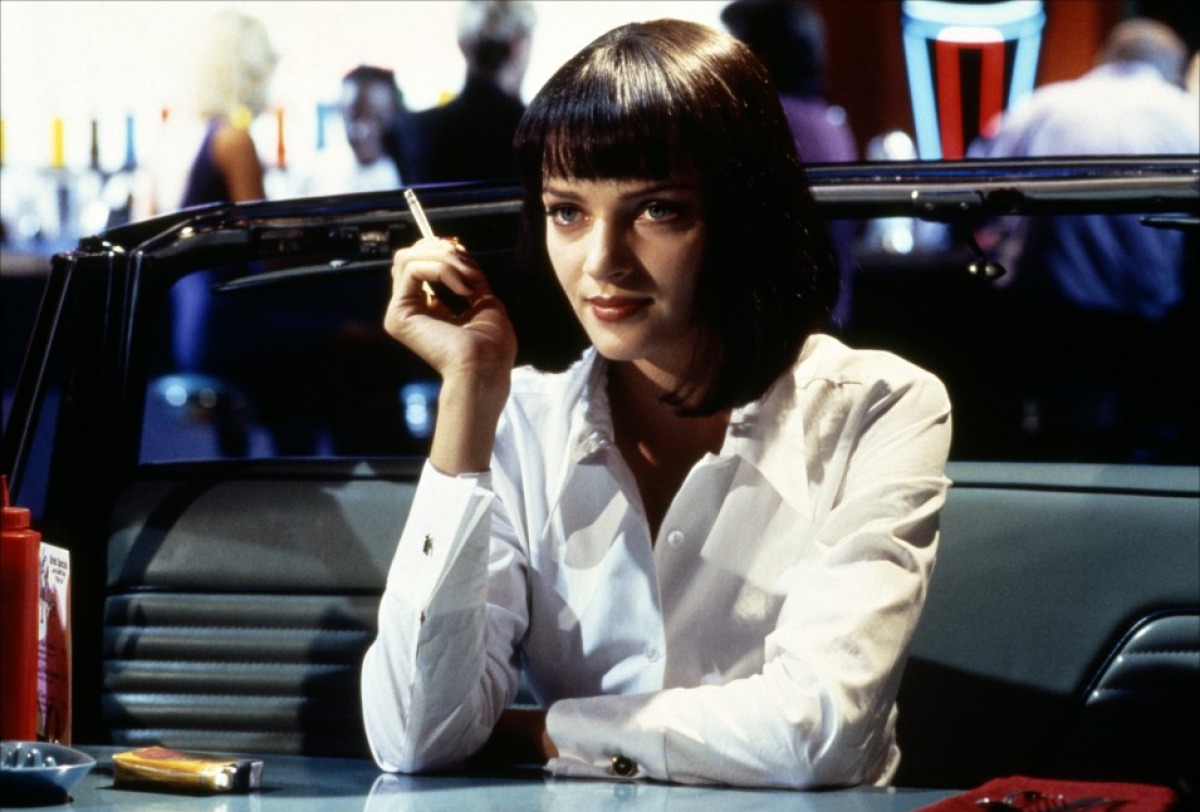
In Tarantino’s postmodern classic black comedy, the various characters interact with one another within the underground crime world of Los Angeles.
The plot is laid out in episodes, detailing the lives and actions of the characters in different chapters, all told out of order. As two smalltime crooks, Pumpkin (Tim Roth) and Honey Bunny (Amanda Plummer) decide to rob a diner, two hitmen, Jules Winnfield (Samuel L. Jackson) and Vincent Vega (John Travolta) discuss sex, divine intervention, and cheeseburgers on their various assassination jobs for their boss, Marsellus Wallace (Ving Rhames).
Meanwhile, boxer Butch Coolidge (Bruce Willis) is on the run from Marsellus after winning a fight that Marsellus told him to throw, as Vincent goes out with Mia Wallace (Uma Thurman), who accidentally overdoses on Vincent’s stash. This circular storyline seems to interweave the chapters, resulting in a film that starts and ends in the same place.
Tarantino’s film, called a neo-noir by some critics, references and pays homage to various pop culture sources and older gangster noir films, such as Murder, My Sweet and Kiss Me Deadly. Los Angeles’ infamous crime and gangster activity makes it the perfect city to set a gangster neo-noir.
Unlike most noirs however, most scenes in the film take place during the day, where we see glimpses of L.A.’s landscape. Pulp Fiction expertly ties all the characters and storylines together, with Los Angeles being a point of reference.
16. Safe (Todd Haynes, 1995)

Todd Haynes’ quiet, unsettling film addresses the health effects that environmental pollution can have on certain sensitive individuals. The smog and toxic chemicals in Los Angeles, namely in the San Fernando Valley, seem to detonate the main character’s environmental illness.
Haynes’ character, Carol White (masterfully played by Julianne Moore) is a woman living within a cold, bourgeois community in the San Fernando Valley. She suddenly begins to come down with a strange illness which her doctor cannot explain: she experiences wheezing, nosebleeds, overall exhaustion, and disorientation. S
he finds a community of people who experience similar symptoms- people who claim it is an “environmental illness” that is caused when a person’s immune system is broken down by all the daily chemicals and pollution of city life. Caught within this toxic world, Carol ventures out to a cult-ish New Mexico wellness retreat center, with the hopes to recuperate.
The film’s atmosphere is tense as Carol’s vague, mousy personality is confronted by this sickness that overwhelms her. It is unclear whether her illness is solely caused by environmental factors, or whether it is a combination of her noxious environment and her psychological state.
The setting of Los Angeles’ San Fernando Valley provides an excellent backdrop to Carol’s lifestyle and growing illness. The Valley is known to trap heat and smog, resulting in awful air quality. That, in combination with the aerosol hairsprays, chemical spraying, and construction (which Haynes is careful to include in his frames) creates this bubble of toxicity that overcomes Carol.
17. Boogie Nights (Paul Thomas Anderson, 1997)
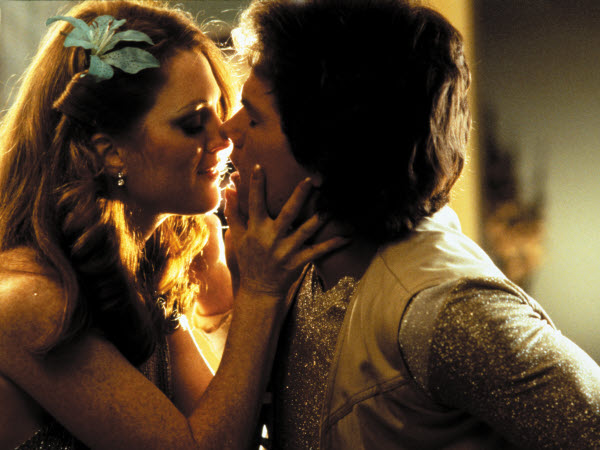
P.T. Anderson’s comedy/drama ensemble film depicts the rise and fall of Dirk Diggler (Mark Wahlberg), young Angelino porn star during the 1970s-80s.
Dirk- formerly known as Eddie Adams- is discovered by pornographic filmmaker, Jack Horner (Burt Reynolds) one evening in a nightclub where Eddie/Dirk works. Jack plucks Dirk from his abusive home in Torrance, and encourages him to join Jack’s porn “family” in the San Fernando Valley.
Blessed with an unusually large penis, Dirk fares very well in the porn industry, resulting in a string of successful films directed by Jack. Upon the arrival of the 1980s, the excesses of drug use begin to wear on Dirk, causing him to fall out with Jack and his fellow porn actors.
The film’s roving storyline also follows Dirk’s friends and symbolic family, including his co-stars Amber Waves (Julianne Moore), Rollergirl (Heather Graham), Buck Swope (Don Cheadle), and fan/boom operator, Scotty J. (Philip Seymour Hoffman), as they face their ups and downs.
During the “golden age” of porn in the 1970s, Los Angeles’ San Fernando Valley was producing the highest quantity of adult entertainment than any other area. Porn studios, filmmakers, and distributors thrived there during that time, giving it the nickname “Porn Valley.” Anderson makes a point to have his film take place in the hottest area for pornography at the time, making Dirk Diggler’s fame all the more precious.